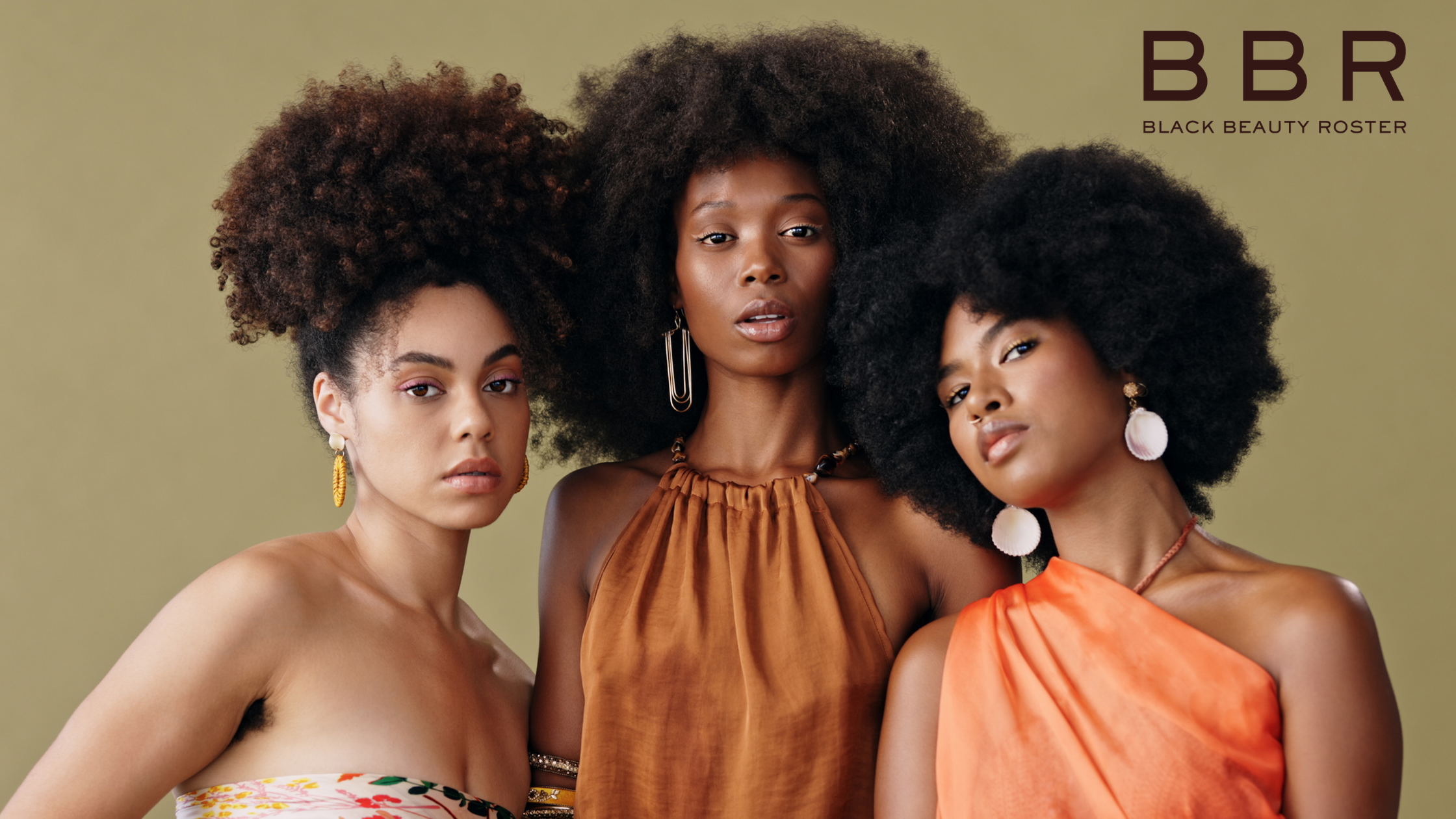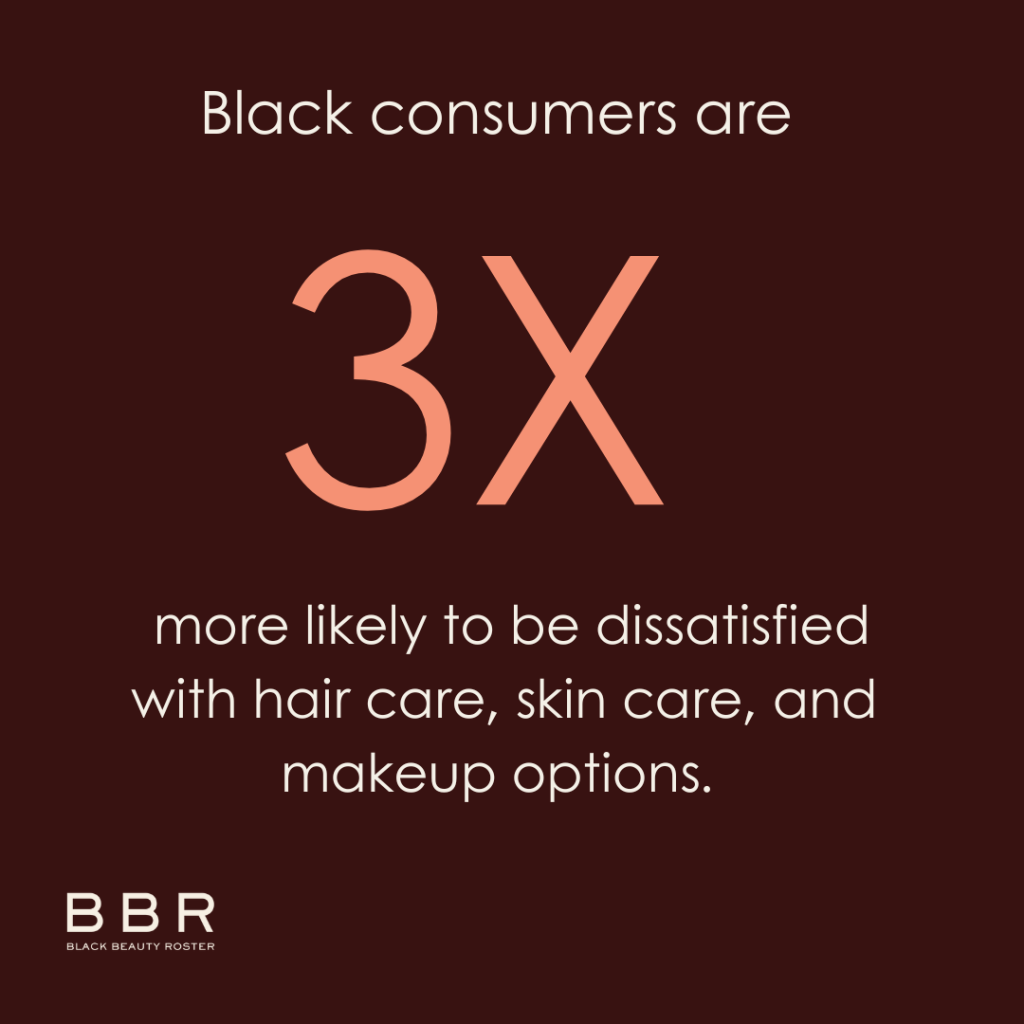Here you will find vetted beauty professionals for your on and off set hair and makeup needs
Artist availability may vary. Please request via BBR Support PageNo Shade: Black Consumers Want More – 7 Stats That Show the Gap in the Beauty Industry

The beauty industry has been slow to reflect the demands and desires of one of its most loyal —Black consumers. Despite their immense spending power and clear preferences, the gap in product availability, representation, and industry support remains glaring.
But here’s the good news: we’ve done the research for you. We dug deep into the stats that highlight this overlooked opportunity, so you don’t have to. Whether you're a beauty brand owner or industry professional, these seven eye-opening statistics will make you rethink how you’re serving this crucial market. Don’t miss out—read on to see what you need to know.
1. Black brands make up only 2.5 percent of revenue in the beauty industry, yet Black consumers are responsible for 11.1 percent of total beauty spending.

This imbalance between revenue share and spending shows a clear opportunity for beauty brands to do more. Black consumers are spending disproportionately in the beauty space, but Black-owned brands are underrepresented. Brands that prioritize closing this gap stand to earn the loyalty and trust of this powerful demographic.
2. Black consumers are three times more likely to be dissatisfied with their options for hair care, skin care, and makeup than non-Black consumers.

The dissatisfaction speaks volumes about unmet needs. Beauty is personal, and when consumers don’t see themselves represented on shelves or find products that cater to their unique concerns, they lose trust. Black consumers deserve solutions designed with their specific beauty challenges in mind—whether it’s for textured hair, hyperpigmentation, or other common skin issues. Brands that cater to these needs will be rewarded with long-term loyalty.
3. Black consumers show a strong preference for Black beauty brands and are 2.2 times as likely to trust that these products will work for them. Yet only 4 to 7 percent of beauty brands carried by specialty stores, drugstores, grocery stores, and department stores are Black brands.
The data speaks to a missed opportunity for retailers. Black consumers believe in the efficacy of Black-owned brands but are not seeing them on shelves. Retailers that diversify their product offerings to include more Black brands will likely capture this market’s attention and dollars. The lesson for beauty brands? Invest in retail partnerships that prioritize diversity and demand shelf space.
4. Only 4 to 5 percent of corporate employees in the US beauty industry are Black, with Black talent overrepresented in low-growth regions and frontline jobs but underrepresented in high-growth markets and leadership roles.
Representation matters not only in products but also within the workforce. A lack of diversity in decision-making roles stifles innovation and inclusivity in product development, marketing, and customer engagement. Beauty brands that prioritize hiring Black talent at every level, especially in leadership, will gain deeper insight into the needs of Black consumers, ultimately resulting in stronger customer relationships and more tailored products.
5. More than 80% of Black-founded brand revenue is captured by brands that are not Black-owned.
There’s a noticeable gap between Black-owned and Black-founded but not Black-owned beauty brands. Studies show non-Black-owned brands take in 82% of the total revenue, while Black-owned brands account for only 18%. This highlights the need for stronger support for fully Black-owned businesses, which often struggle to gain a fair share of the market. While non-Black-owned brands serving Black consumers play a role, achieving real equity means elevating Black founders and owners so their ideas, products, and businesses can flourish.
6. Addressing racial inequity in the beauty industry is a $2.6 billion opportunity.

DEI initiatives in beauty are not charity work—they’re smart business strategies.The beauty industry has the potential to unlock billions by addressing racial inequity. By better serving Black consumers and supporting Black-owned beauty brands, beauty houses, retailers, and investors alike could see major financial gains. This is not just about doing what’s right; it’s about leveraging an untapped market and meeting consumer demand for more inclusive and equitable beauty solutions.
7. Representation is lacking: 45% of Black men say that representation of Black men in beauty products is missing.
It’s not just Black women who feel left out—Black men are also calling for more representation in the beauty aisle. The beauty industry tends to focus heavily on women, but men make up a growing segment of the beauty market. Brands that offer inclusive marketing and products tailored to Black men’s grooming needs will capture another underrepresented market.
Final Thoughts for Beauty Brand Owners
For beauty brands, retailers, and investors, these statistics highlight an urgent need for action. The underrepresentation of Black consumers and Black-owned brands in the industry is not only a disservice to a key demographic but also a missed financial opportunity. Brands that take the initiative to close this gap will not only foster equity but also position themselves for long-term success in a rapidly evolving market.
Sources:
- McKinsey & Company, "Race in the Workplace: The Black Experience in the US Private Sector," accessed September 2024. https://www.mckinsey.com/featured-insights/diversity-and-inclusion/race-in-the-workplace-the-black-experience-in-the-us-private-sector
- NIQ, "Black Consumer Spending in the US Beauty Category," accessed September 2024. https://nielseniq.com/global/en/insights/analysis/2024/black-consumer-spending-in-the-us-beauty-category/






